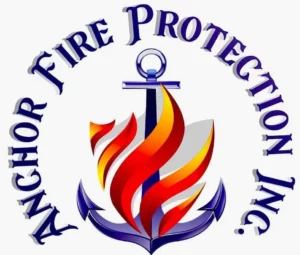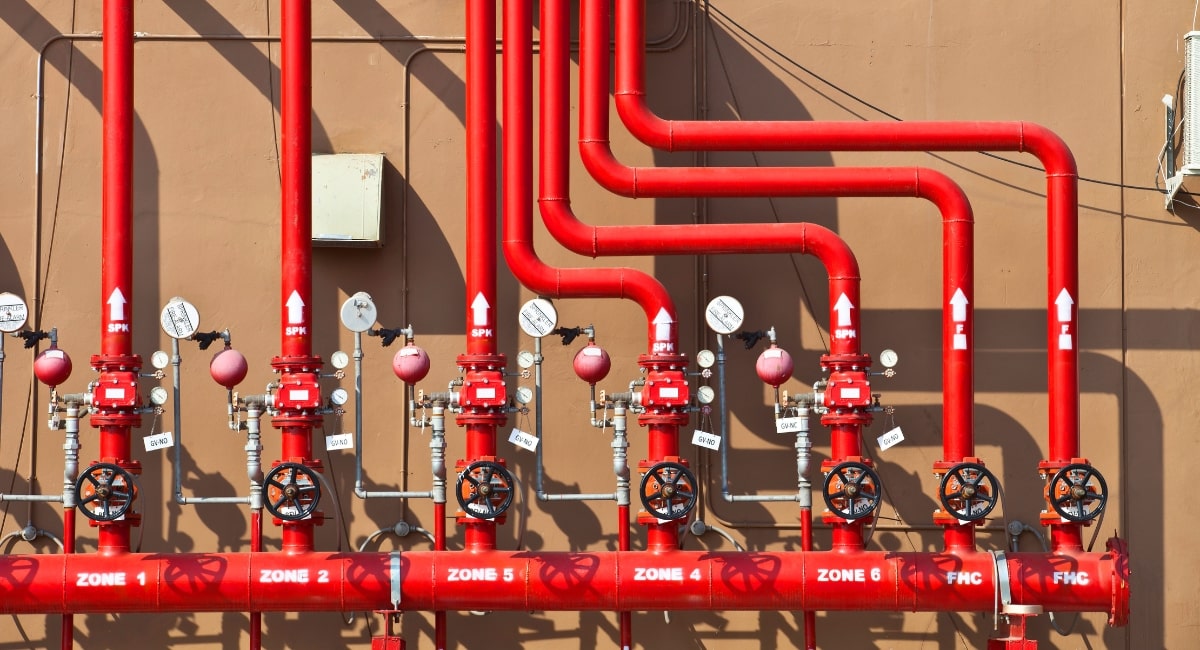Why Is a Standpipe System Necessary for High-Rise Buildings or Structures?
Ever wondered why tall buildings need standpipe systems? Imagine a huge skyscraper with many people; suddenly, there’s a fire. In such tall buildings, standpipe systems are essential for keeping everyone safe.
They have water outlets and pipes placed strategically so firefighters can quickly reduce fire on the upper floors of tall buildings. These systems make reaching high places during a fire much easier, which can be a lifesaver.
So, in this guide, we’ll discuss what is a standpipe system, how it works, its types, its benefits, and much more!
What is a Fire Standpipe System?
In simple terms, a fire protection standpipe is a system in a building containing pipes, valves, hose connections, and related equipment. These components are strategically installed, allowing water to be released in streams or sprays through attached hoses and nozzles. The primary purpose is to extinguish a fire, safeguarding the building, its contents, and the people inside.
To further break down the standpipe definition, they are like an internal network of pipes connected to a water source, providing multiple water outlets. You can consider them as indoor fire hydrants. They are a crucial resource for occupants and firefighters, enabling them to access water quickly when dealing with fires.
What are the Benefits of Installing a Standpipe System in Tall Buildings?
Saves Time
Regulate Water Pressure
Provide Backup Plan
What Types of Standpipe Systems Protect High-Rise Buildings?
Class I
Class II
Class III
These standpipe systems are a mix of Class I and Class II. They have both 2.5” and 1.5” hose connections. The 1.5” connections have hoses always attached. Early Class III systems had a reducer allowing a 1.5” hose to be attached to a 2.5” connection.
Some versions feature a 2.5” connection for firefighters and a separate 1.5” connection with an attached hose. There are also Class III systems with a 2.5” connection, a reducer to a 1.5” connection, and no attached hose.
How Does a Standpipe System Work to Protect Tall Buildings and Structures?
Automatic Wet Standpipe System
Automatic Dry Standpipe System
Semi Automatic Dry Standpipe System
Manual Wet Standpipe System
Manual Dry Standpipe System
When a Building Needs Standpipe Systems?
Here are the circumstances in which buildings need a standpipe system:
Building Height or Depth: If a building is more than three stories above or below street level, it must have a standpipe system.
Class III Requirement: A Class III standpipe system is necessary for structures with the highest or lowest story over 30 feet above or below. This ensures that buildings with significant height differences have the essential firefighting equipment.
Specific Building Types: According to Section 905 of the International Building Code (IBC), standpipe systems are also required in the following cases:
- Buildings with over 1,000 people need a Class I automatic wet standpipe system.
- Covered and open mall buildings meeting height or depth criteria require a standpipe system.
- Underground buildings need a Class I automatic wet or manual wet standpipe system.
Stage Areas: Buildings with stages covering 1,000 square feet or more require a Class III wet standpipe system with hose connections on each side of the stage.
Helipads and Rooftop Gardens: If there’s a rooftop helicopter landing site, a Class I or III standpipe system extending to the roof level is necessary. The same goes for buildings with existing standpipe systems and landscaped rooftop gardens.
Marinas and Boatyards: If the distance from the nearest fire apparatus is over 150 feet, these places need a Class I standpipe system. It ensures proper firefighting capabilities for waterfront locations.
Conclusion
The necessity of a standpipe system in tall buildings becomes evident in its crucial role in fire protection and safety. These systems, acting as internal networks of strategically placed pipes and outlets, respond rapidly to firefighting needs, especially in high-rise structures. Moreover, the benefits of standpipe systems show their significance in safeguarding the building and its occupants. So, installing standpipe systems isn’t a suggestion but is necessary to ensure the safety of tall buildings and the people within them.
Contact Anchor fire for any queries or fire protection services in Los Angeles or Orange County, CA.
FAQs
KEEP YOUR PROPERTY SAFE
Related posts
-
Fire Safety Tips for the Workplace
-
Fire Safety Tips for Hospitals
-
How to size fire pumps?
-
Different types of sprinklers?
-
What is fire protection system?
-
Fire Extinguisher Inspection
-
Fire Sprinkler System Components
-
What are the most common types of fire pumps?
-
How much does a fire sprinkler system cost?
-
What is active and passive fire protection?

